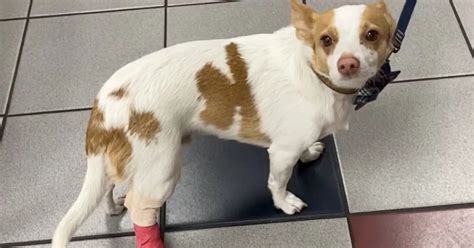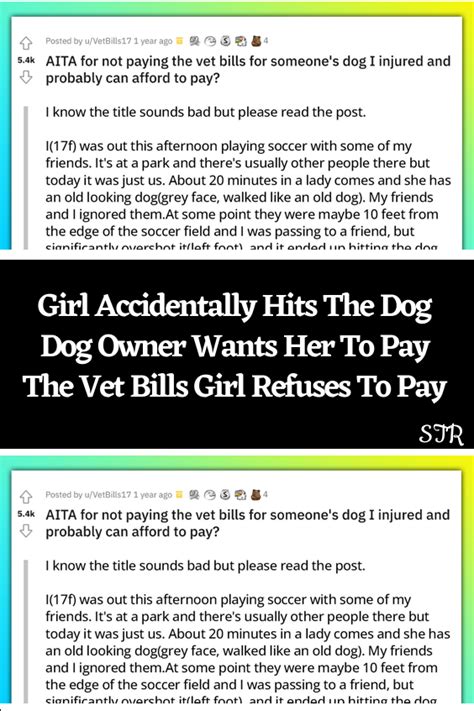
A Belgian Malinois named Lucy fearlessly evicted a seal from a dock in Seattle’s Puget Sound, captivating onlookers and going viral online. The incident, captured on video, showcases the dog’s surprising assertiveness and highlights the ongoing interactions between wildlife and domestic animals in urban coastal environments.
A video that surfaced recently shows Lucy, a Belgian Malinois, confronting a seal lounging on a private dock in the Puget Sound area. The footage, initially posted on social media, quickly gained traction, demonstrating the dog’s unwavering determination as it barked and nudged the seal until the marine mammal retreated into the water. The event has sparked considerable discussion about the interactions between domestic animals and local wildlife and the responsibilities of pet owners in shared environments.
“She was really persistent,” said the dog’s owner, describing Lucy’s behavior. “The seal didn’t seem too bothered at first, but Lucy wouldn’t give up.”
The incident occurred on a privately-owned dock in an area known for its marine wildlife sightings. Seals are common inhabitants of Puget Sound, often seen resting on docks and buoys. The presence of domestic animals, such as dogs, in these areas can sometimes lead to conflicts, highlighting the need for responsible pet ownership and awareness of local wildlife.
The video shows Lucy approaching the seal with a mix of curiosity and determination. Initially, the seal appears unfazed, remaining stationary as Lucy barks and circles it. However, Lucy’s persistence eventually pays off as she begins to nudge the seal, which then decides to slip back into the water.
“We were surprised at how bold she was,” the owner added. “She’s usually very gentle, but she clearly felt the dock was her territory.”
The event raises questions about the potential impact of domestic animals on wildlife populations and the importance of maintaining a respectful distance. Experts emphasize that while such interactions may seem harmless, they can disrupt natural behaviors and potentially stress or harm wildlife.
“It’s important to remember that we share these environments with wildlife,” noted a local wildlife biologist. “Keeping dogs on a leash and maintaining a safe distance can help prevent these types of encounters.”
The incident involving Lucy and the seal serves as a reminder of the need for responsible pet ownership in areas where wildlife is present. By being aware of their surroundings and taking steps to minimize potential conflicts, pet owners can help ensure the safety and well-being of both their animals and the local wildlife. The incident also highlights the adaptability and resilience of wildlife in urban environments, where they must navigate a range of challenges, including interactions with domestic animals and human activities.
Detailed Account of the Incident
The encounter, which took place on a sunny afternoon, unfolded rapidly. Lucy, an athletic and energetic Belgian Malinois, was enjoying time off-leash with her owners on their private dock. The dock extends into the Puget Sound, a body of water teeming with marine life, including seals, sea otters, and various species of fish and seabirds. The presence of the seal initially went unnoticed by Lucy’s owners, who were engaged in conversation.
Lucy, however, quickly detected the marine mammal lounging near the edge of the dock. Her initial reaction was one of curiosity, but her demeanor soon shifted to assertiveness. The video footage shows Lucy approaching the seal cautiously, her tail wagging slightly, as if unsure of the creature’s intentions. As she got closer, she began to bark, a series of sharp, insistent sounds that clearly indicated her desire for the seal to vacate the premises.
The seal, initially unfazed by Lucy’s presence, remained stationary, seemingly accustomed to the presence of humans and their pets. It lay basking in the sun, occasionally glancing at Lucy but showing no signs of alarm. However, Lucy’s persistence began to wear the seal down. She circled the seal, barking incessantly and occasionally nudging it with her nose.
The owner recounted their surprise, stating, “We were watching her, trying to figure out what she was doing. At first, we thought she was just curious, but then she started barking, and we realized she wanted the seal to move.”
As Lucy’s nudges became more insistent, the seal began to show signs of agitation. It shifted its weight, grunted softly, and looked increasingly uncomfortable. Eventually, after several minutes of Lucy’s relentless harassment, the seal decided to retreat. It lumbered towards the edge of the dock and slipped into the cool waters of Puget Sound.
Lucy, having successfully evicted the intruder, stood at the edge of the dock, watching the seal swim away. She barked a few more times, as if to ensure that the seal understood the message, before turning and trotting back to her owners, her tail wagging proudly.
The Belgian Malinois: Breed Characteristics and Temperament
The Belgian Malinois is a breed of dog known for its intelligence, athleticism, and strong work ethic. Originating from Belgium, these dogs were initially bred as herding dogs but have since been used in a variety of roles, including police work, military operations, and search and rescue missions.
Belgian Malinois are highly energetic and require a significant amount of exercise and mental stimulation to thrive. They are also known for their loyalty and protective nature, which can sometimes lead to territorial behavior.
“They are very intelligent and eager to please,” explains a dog trainer specializing in working breeds. “But they also need a strong leader and consistent training to channel their energy and prevent them from becoming destructive.”
Lucy’s behavior towards the seal is consistent with the breed’s protective instincts. While she may not have perceived the seal as a direct threat, she likely viewed it as an intruder on her territory, prompting her to take action.
The Ecological Context: Wildlife in Urban Environments
The Puget Sound region is home to a diverse array of wildlife, including marine mammals, birds, and fish. As urban development encroaches on natural habitats, these animals are increasingly forced to adapt to living in close proximity to humans.
Seals are common inhabitants of Puget Sound, often seen in harbors, bays, and along the coastline. They are opportunistic feeders, preying on fish, squid, and crustaceans. Seals often haul out on docks, buoys, and beaches to rest and bask in the sun.
The presence of domestic animals, such as dogs, in these areas can pose challenges for wildlife. Dogs can harass or injure wildlife, disrupt their feeding and resting patterns, and transmit diseases. It is crucial for pet owners to be aware of the potential impact of their animals on wildlife and take steps to minimize potential conflicts.
“We need to be mindful of the fact that we share these spaces with wildlife,” emphasizes a local environmental advocate. “It’s our responsibility to protect and respect their habitats.”
Responsible Pet Ownership: Best Practices
To prevent conflicts between domestic animals and wildlife, pet owners should follow several best practices:
- Keep dogs on a leash: When walking dogs in areas where wildlife is present, it is essential to keep them on a leash. This will prevent them from chasing or harassing wildlife.
- Maintain a safe distance: Avoid approaching or disturbing wildlife. Observe them from a distance and give them plenty of space.
- Clean up after your pet: Dog waste can pollute waterways and transmit diseases to wildlife. Always clean up after your pet and dispose of waste properly.
- Be aware of your surroundings: Pay attention to your surroundings and be aware of the potential presence of wildlife.
- Educate yourself: Learn about the local wildlife and the potential impacts of domestic animals on their populations.
By following these guidelines, pet owners can help ensure the safety and well-being of both their animals and the local wildlife.
Ethical Considerations: Human-Wildlife Interactions
The incident involving Lucy and the seal raises broader ethical questions about human-wildlife interactions. As humans continue to encroach on natural habitats, it is increasingly important to consider the ethical implications of our actions and strive to minimize our impact on wildlife.
Some argue that humans have a moral obligation to protect wildlife and preserve their habitats. Others believe that human needs and interests should take precedence. Striking a balance between these competing perspectives is a complex and ongoing challenge.
“We need to find ways to coexist peacefully with wildlife,” says an ethicist specializing in environmental issues. “This requires a commitment to responsible stewardship and a willingness to prioritize the well-being of both humans and animals.”
Social Media Impact and Public Reaction
The video of Lucy evicting the seal quickly went viral on social media platforms, generating a wide range of reactions. Some viewers praised Lucy’s bravery and assertiveness, while others expressed concern for the seal’s welfare.
Many users commented on the intelligence and trainability of Belgian Malinois, highlighting their suitability for various working roles. Others emphasized the importance of responsible pet ownership and the need to protect wildlife.
The incident also sparked humorous reactions, with some users creating memes and jokes based on the video. The online discussion surrounding the event reflects the public’s fascination with animal behavior and the ongoing debate about human-wildlife interactions.
Expert Opinions and Analysis
Veterinarians, animal behaviorists, and wildlife experts have weighed in on the incident, offering their perspectives on Lucy’s behavior and its potential implications.
“Lucy’s actions are not necessarily aggressive, but rather territorial,” explains a veterinarian specializing in canine behavior. “She likely perceived the seal as an intruder on her property and acted accordingly.”
Wildlife experts emphasize the importance of minimizing human disturbance of wildlife habitats. “Seals need to rest and haul out on land to regulate their body temperature and avoid predators,” says a marine biologist. “Disturbing them can disrupt their natural behaviors and potentially stress them.”
Experts agree that the incident serves as a reminder of the need for responsible pet ownership and the importance of respecting wildlife.
Legal Considerations: Animal Control and Wildlife Protection
The incident raises questions about the legal framework governing animal control and wildlife protection in the Puget Sound region.
Local ordinances typically require pet owners to keep their dogs under control at all times, either on a leash or under voice command. Failure to comply with these regulations can result in fines or other penalties.
Federal and state laws also protect marine mammals, including seals, from harassment and harm. It is illegal to intentionally disturb or injure these animals.
The enforcement of these laws can be challenging, particularly in areas where wildlife and humans coexist in close proximity.
Long-Term Implications and Future Prevention
The incident involving Lucy and the seal highlights the need for ongoing efforts to promote responsible pet ownership and protect wildlife habitats.
Public education campaigns can help raise awareness of the potential impacts of domestic animals on wildlife and encourage pet owners to adopt best practices.
Increased enforcement of animal control and wildlife protection laws can help deter irresponsible behavior and ensure the safety of both animals and humans.
Collaboration between government agencies, conservation organizations, and local communities is essential to develop effective strategies for managing human-wildlife interactions.
By taking these steps, we can help create a more harmonious coexistence between humans and wildlife in the Puget Sound region.
Lucy’s Legacy and Future Interactions
Following the widespread attention, Lucy’s owners have reiterated their commitment to responsible pet ownership. They plan to be even more vigilant when Lucy is near the water and will ensure she remains under close supervision to prevent similar incidents.
“We love Lucy, and we love the wildlife in Puget Sound,” said the owner. “We want to make sure everyone is safe and happy.”
The incident serves as a valuable learning experience for both pet owners and the broader community. It underscores the importance of understanding animal behavior, respecting wildlife habitats, and promoting responsible stewardship of our shared environment.
While Lucy’s actions may have been driven by instinct, they have sparked a broader conversation about human-wildlife interactions and the need for greater awareness and responsibility. Her story will likely serve as a reminder for years to come of the importance of protecting and respecting the diverse wildlife that calls Puget Sound home.
Frequently Asked Questions (FAQ)
-
What breed of dog is Lucy, and what are some of its common characteristics?
- Lucy is a Belgian Malinois, a breed known for its intelligence, athleticism, and strong work ethic. They are often used in police and military roles due to their high energy and trainability. They require a significant amount of exercise and mental stimulation and are known for their loyalty and protective nature.
-
What happened between Lucy and the seal on the dock?
- Lucy encountered a seal lounging on a private dock in Puget Sound. Initially curious, Lucy became assertive, barking and nudging the seal until it retreated into the water. The incident was captured on video and went viral on social media.
-
Why did Lucy likely behave the way she did towards the seal?
- Lucy’s behavior is likely attributed to the breed’s protective and territorial instincts. She probably viewed the seal as an intruder on what she perceived as her territory, prompting her to take action to remove it.
-
What are the potential impacts of domestic animals, like dogs, on local wildlife populations?
- Domestic animals can harass or injure wildlife, disrupt their feeding and resting patterns, and transmit diseases. It’s essential for pet owners to be aware of these potential impacts and take steps to minimize conflicts by keeping dogs on leashes, maintaining a safe distance from wildlife, and cleaning up after their pets.
-
What steps can pet owners take to prevent similar incidents from happening in the future?
- Pet owners can prevent similar incidents by keeping dogs on a leash in areas where wildlife is present, maintaining a safe distance from wildlife, cleaning up after their pets, being aware of their surroundings, and educating themselves about local wildlife and the potential impacts of domestic animals.
Additional Context and Elaboration:
Detailed Analysis of the Viral Video Phenomenon:
The viral nature of the Lucy and seal video can be attributed to several factors. Firstly, the unexpected interaction between a domestic dog and a wild animal immediately grabs attention. The contrast between the familiar image of a dog and the less commonly seen sight of a seal on a dock creates a sense of novelty and intrigue. Secondly, the video’s relatively short length and easily digestible content make it perfect for sharing across various social media platforms. Finally, the element of surprise – the dog’s assertive behavior towards a much larger animal – adds to the entertainment value and encourages viewers to share the video with their friends and followers.
Beyond mere entertainment, the video also sparked discussion due to its underlying themes. The interaction highlights the increasing encroachment of human activities on natural habitats and the resulting encounters between domestic animals and wildlife. This raises questions about our responsibilities as stewards of the environment and the importance of maintaining a respectful distance from wildlife. The video, therefore, became a catalyst for conversations about conservation, responsible pet ownership, and the ethical considerations of human-animal interactions.
Expanding on the Ecological Significance of Puget Sound:
Puget Sound is a vital ecosystem characterized by its unique geological features and diverse marine life. The sound’s deep waters, complex coastline, and nutrient-rich environment support a wide range of species, including salmon, orcas, seals, seabirds, and countless invertebrates. The health of Puget Sound is critical not only for the local ecosystem but also for the regional economy, as it supports a thriving fishing industry, tourism, and recreational activities.
However, Puget Sound faces numerous environmental challenges, including pollution from stormwater runoff, habitat loss due to development, and the impacts of climate change. The presence of domestic animals, while seemingly a minor issue, can contribute to these challenges by disturbing wildlife, spreading diseases, and adding to the overall stress on the ecosystem.
Efforts to protect Puget Sound are ongoing, involving government agencies, conservation organizations, and local communities. These efforts include restoring degraded habitats, reducing pollution, and promoting sustainable practices. The incident involving Lucy and the seal serves as a reminder of the importance of these efforts and the need for continued vigilance in safeguarding this valuable ecosystem.
Further Examination of Legal Frameworks and Enforcement Challenges:
The legal framework governing animal control and wildlife protection in the Puget Sound region is complex and involves a mix of federal, state, and local regulations. The Marine Mammal Protection Act (MMPA), a federal law, protects marine mammals, including seals, from harassment, hunting, and other forms of harm. The Washington Department of Fish and Wildlife (WDFW) is responsible for managing wildlife populations within the state and enforcing state laws related to wildlife protection. Local governments, such as cities and counties, also have ordinances that regulate animal control and pet ownership.
Enforcement of these laws can be challenging due to limited resources and jurisdictional complexities. WDFW officers often have vast areas to cover and must prioritize their efforts based on the severity of the situation. Local animal control officers may also face challenges in enforcing leash laws and responding to reports of wildlife harassment. In many cases, enforcement relies on public reporting and voluntary compliance.
The incident involving Lucy and the seal highlights the need for greater public awareness of these laws and the importance of reporting violations. It also underscores the need for increased resources for law enforcement agencies to effectively protect wildlife and ensure responsible pet ownership.
Deep Dive into Training Techniques for Belgian Malinois and Management Strategies
Belgian Malinois, renowned for their high intelligence and energy, require specialized training techniques to channel their instincts effectively. Early socialization is crucial, exposing them to diverse environments, people, and other animals to prevent fear-based aggression or excessive territoriality. Positive reinforcement methods, such as rewarding desired behaviors with treats or praise, prove highly effective due to their eagerness to please.
Obedience training forms the foundation, establishing clear communication and control. Commands like “leave it” and “stay” are particularly useful in managing their interactions with wildlife, enabling owners to interrupt potential chasing or harassment. Advanced training, such as agility or scent work, provides mental and physical stimulation, reducing the likelihood of boredom-induced behavioral issues.
Managing a Belgian Malinois in areas with wildlife requires constant vigilance. Utilizing a long leash allows for greater freedom while maintaining control. Employing high-value treats or toys can redirect their attention from enticing wildlife. Recognizing early warning signs of prey drive, such as intense staring or body tensing, enables proactive intervention. Owners must consistently reinforce desired behaviors and correct unwanted ones, ensuring a safe and respectful coexistence with the natural environment.
Comparative Analysis: Similar Incidents Involving Dogs and Wildlife
The interaction between Lucy and the seal is not an isolated incident. Throughout the world, there have been numerous documented cases of dogs interacting with wildlife, ranging from playful encounters to aggressive confrontations. In some instances, dogs have been injured or killed by wildlife, while in others, wildlife has been harmed or killed by dogs.
In coastal areas, dogs have been known to chase seabirds, harass marine mammals, and disturb nesting sites. In forested areas, dogs have been reported to pursue deer, squirrels, and other wildlife. These interactions can have significant consequences for wildlife populations, particularly for species that are already threatened or endangered.
Analyzing these incidents reveals common themes and contributing factors. Lack of leash control, inadequate training, and a lack of awareness of wildlife presence are often cited as key factors. In some cases, dogs may simply be acting on instinct, while in others, they may be responding to perceived threats or territorial intrusions.
By studying these similar incidents, we can gain valuable insights into the challenges of managing human-wildlife interactions and develop more effective strategies for preventing conflicts.
Exploring the Role of Education and Community Engagement in Wildlife Conservation
Effective wildlife conservation requires more than just laws and regulations; it also depends on education and community engagement. Public education campaigns can help raise awareness of the importance of wildlife, the threats they face, and the steps individuals can take to protect them. Community engagement initiatives can empower local residents to become active participants in conservation efforts.
Educational programs can be targeted at different audiences, including pet owners, schoolchildren, and tourists. These programs can use a variety of methods, such as brochures, websites, presentations, and workshops, to convey key messages. Community engagement initiatives can involve activities such as volunteer habitat restoration projects, citizen science monitoring programs, and community forums to discuss conservation issues.
By fostering a sense of stewardship and responsibility, education and community engagement can play a crucial role in promoting wildlife conservation and ensuring the long-term health of our ecosystems.
Examining the Economic Impact of Wildlife Encounters and Conservation Efforts
Wildlife encounters, both positive and negative, can have significant economic impacts. Wildlife viewing and ecotourism can generate revenue for local businesses and communities. However, conflicts between humans and wildlife can also result in economic losses, such as damage to property, crop losses, and livestock depredation.
Conservation efforts, such as habitat restoration and wildlife management, can also have economic costs and benefits. Restoration projects can create jobs and stimulate local economies. Wildlife management programs can help control populations of nuisance species and prevent damage to property.
Analyzing the economic impacts of wildlife encounters and conservation efforts is essential for making informed decisions about resource allocation and policy development. Cost-benefit analyses can help determine the most effective strategies for managing wildlife and minimizing conflicts with humans.
Future Directions: Emerging Technologies and Strategies for Wildlife Management
As technology advances, new tools and strategies are emerging for wildlife management. GPS tracking devices can be used to monitor the movements of animals and gain insights into their behavior and habitat use. Drones can be used for aerial surveys of wildlife populations and for monitoring habitat conditions. Artificial intelligence (AI) can be used to analyze large datasets and identify patterns that can inform conservation decisions.
These emerging technologies offer the potential to improve our understanding of wildlife and to develop more effective strategies for protecting them. However, it is also important to consider the ethical implications of these technologies and to ensure that they are used responsibly and in a way that respects the welfare of animals.
By embracing innovation and adapting to changing conditions, we can continue to improve our ability to manage wildlife and ensure their long-term survival.
The Broader Narrative: Human Responsibility and Environmental Stewardship
The story of Lucy and the seal transcends the specific details of the incident. It serves as a microcosm of the larger narrative of human responsibility and environmental stewardship. As humans continue to expand our footprint on the planet, we must recognize the impact of our actions on wildlife and ecosystems. We must strive to minimize our negative impacts and to promote the well-being of all living things.
This requires a shift in mindset from viewing nature as a resource to be exploited to viewing it as a community to which we belong. It requires a commitment to responsible stewardship, ethical decision-making, and a willingness to prioritize the long-term health of the planet over short-term gains. By embracing this broader narrative, we can create a more sustainable and harmonious future for both humans and wildlife.
Continuing Dialogue: Fostering a Culture of Respect for Wildlife
The incident with Lucy should not be the end of the discussion but rather a catalyst for continued dialogue about human-wildlife interactions and the importance of fostering a culture of respect for wildlife. This dialogue should involve all stakeholders, including pet owners, wildlife experts, government agencies, and community members.
Open and honest conversations can help identify common ground, address concerns, and develop solutions that benefit both humans and wildlife. By working together, we can create a more informed and engaged community that is committed to protecting the diverse wildlife that shares our planet. The conversation regarding responsible pet ownership, respecting boundaries with wildlife, and the long-term well-being of Puget Sound must continue for years to come. This ensures that the story of Lucy and the seal becomes a lasting lesson, not just a fleeting viral moment.









